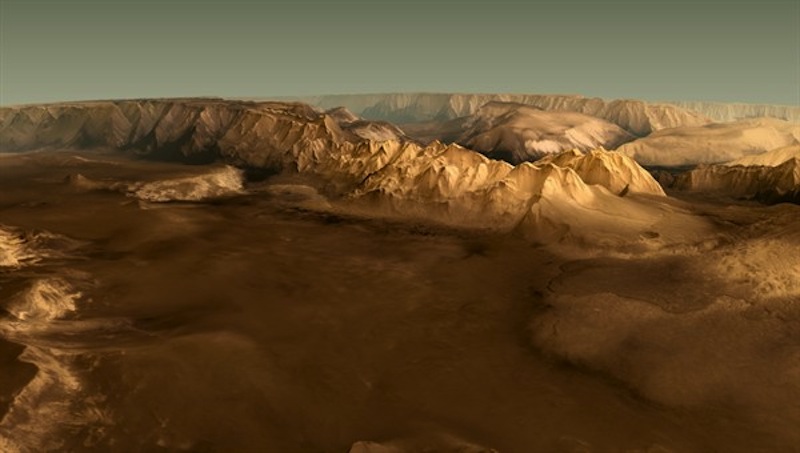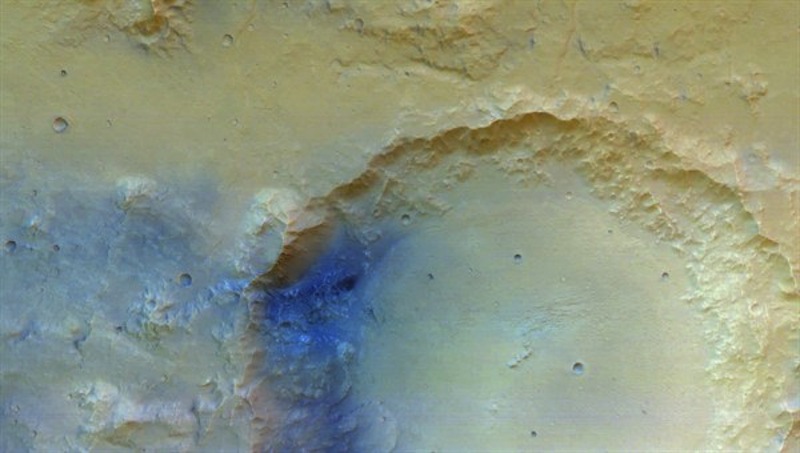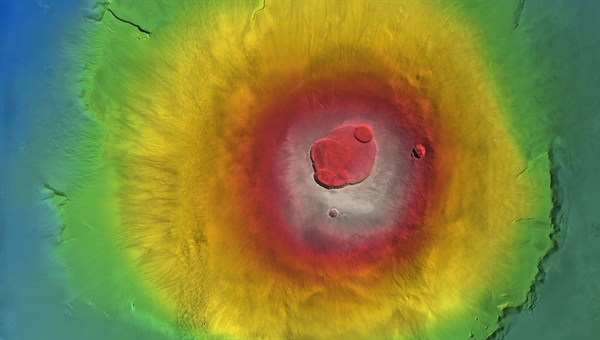Spectacular 3D Mars Video Brings Red Planet to Life

A newly released video, created by stitching together images taken by a veteran Mars spacecraft, provides a richly detailed, three-dimensional view of the Red Planet.
The European Space Agency's Mars Express spacecraft has orbited the Red Planet nearly 12,000 times, capturing images of Martian valleys, canyons and lava flows that have provided unprecedented views of planet's terrain. Researchers pieced together the individual images into a video that shows a eye-popping video of Mars in 3D.

"For the first time, we can see Mars spatially — in three dimensions," Ralf Jaumann, project manager for the Mars Express mission at the German Aerospace Center, said in a statement.
Mars Express has covered 37 million square miles (97 million square kilometers) of Mars' surface (out of 56 million square miles or 145 million square kilometers) in high resolution. Researchers around the world combine data from Mars Express with other NASA missions at the Red Planet, to better understand the foreign world.
"This has enabled the creation of the most comprehensive data set that has ever been acquired by a German instrument designed to study our solar system," Jaumann said.
Nine light-sensitive detectors aboard Mars Express sweep across the surface of the planet, capturing images in sequence from nine different angles. This data is then processed into three-dimensional images by planetary researchers at the German Aerospace Center.
"We can see the entire topography almost as well as if we were standing on Mars ourselves," Jaumann said.
Get the Space.com Newsletter
Breaking space news, the latest updates on rocket launches, skywatching events and more!

Researchers can use these topographical maps to study volcanism on Mars, including some of the planet's shield volcanoes in the Tharsis region that were still active just a few million years ago.
Mars Express was launched toward the Red Planet 10 years ago, on June 2, 2003. The spacecraft arrived at Mars six-and-a-half months later, and has maintained its Martian orbit ever since. The mission, which was originally planned to last for about two years (or one Martian year), is now expected to continue operating until the end of 2014.
Follow Denise Chow on Twitter @denisechow. Follow us @Spacedotcom, Facebook or Google+. Originally published on SPACE.com.
Join our Space Forums to keep talking space on the latest missions, night sky and more! And if you have a news tip, correction or comment, let us know at: community@space.com.

Denise Chow is a former Space.com staff writer who then worked as assistant managing editor at Live Science before moving to NBC News as a science reporter, where she focuses on general science and climate change. She spent two years with Space.com, writing about rocket launches and covering NASA's final three space shuttle missions, before joining the Live Science team in 2013. A Canadian transplant, Denise has a bachelor's degree from the University of Toronto, and a master's degree in journalism from New York University. At NBC News, Denise covers general science and climate change.









